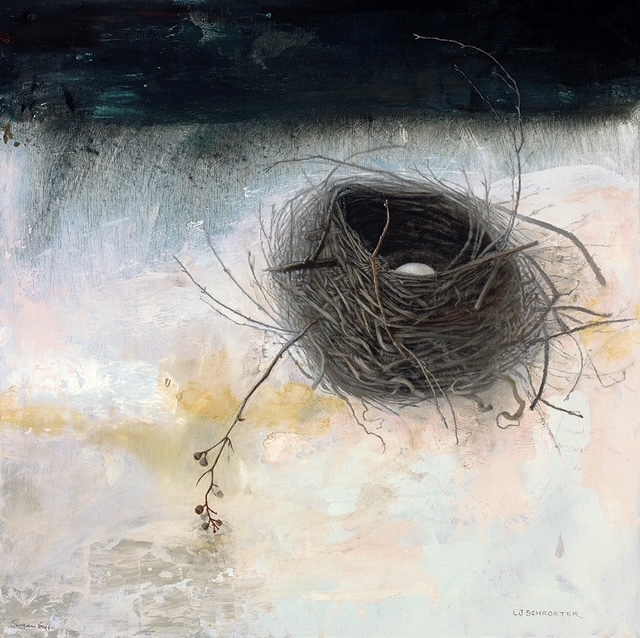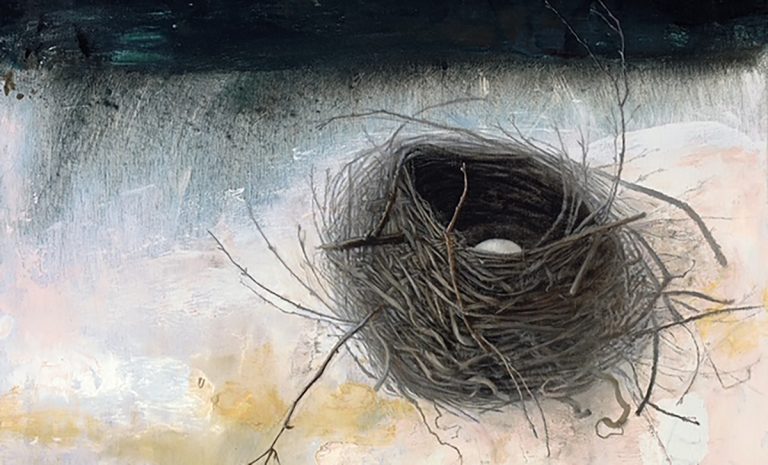Linda Schroeter, born in 1963 in Australia, has long been drawn to the quiet drama and symbolic power of Dutch master paintings. There’s something in their mood—the flicker of light, the stillness that feels heavy with meaning—that has stayed with her. Over the years, Schroeter has taken that inspiration and carved out a path of her own, rooted in traditional techniques but reaching for something personal. She doesn’t just paint a scene—she shapes an atmosphere, invites you to pause, to look closer, to feel something underneath.

Her method is slow, intentional. She builds depth through layers, manipulating light like a stage director with a spotlight. Nothing is rushed. Every choice—each tone, form, or shadow—is part of a larger, silent conversation. Her goal isn’t just to show you something. It’s to make you reflect, to stir something inside, to meet the painting halfway with your own thoughts. Her work leans into mystery, allowing space for interpretation.
Schroeter’s recent collaboration with abstract artist Griffin shows what happens when two opposing styles meet on one canvas. Their project, described as abstract realism, invites both painters to work on the same surface—each responding to the other, each layering their voice on top of and beside the other. It’s an experiment in trust, reaction, and restraint.
Schroeter, who works in the indirect method, starts with a strong foundation. She builds forms slowly, focusing on light, shadow, and structure. Griffin brings a more instinctual, energetic approach—color fields, loose gestures, textures that fight against realism. You’d expect a clash. But instead, the result is a strange harmony. The tension becomes part of the beauty.
These shared works blur the line between real and abstract, forcing both artists to let go of total control. Sometimes Schroeter sets the tone with a figure or a realistic object; other times Griffin lays down a base that calls for Schroeter’s grounding hand. They’re not trying to “win” over the canvas—they’re listening, responding, finding common ground in the contrast.
This dance between control and surrender, clarity and abstraction, is at the heart of their project. What emerges is a visual push-pull that mirrors real-life conversations, relationships, or even the internal dialogue we all carry. Schroeter’s layered approach gives weight and stillness, while Griffin’s energy disrupts and reanimates. Together, they create a rhythm.
There’s something intimate about seeing two worlds come together like this. You start to notice how differently they think—and where they unexpectedly align. In one piece, a delicate hand painted by Schroeter reaches through a storm of Griffin’s brushstrokes. In another, a soft, realistic face is partially obscured by a wash of color, as if memory itself is dissolving around it.
These pieces feel alive. You can almost sense the artists stepping back, looking at what the other did, then picking up the brush again—sometimes gently, sometimes forcefully. It’s a process that requires ego to step aside. And in doing so, it becomes about something more than just painting. It becomes about dialogue. About how two ways of seeing the world can overlap without canceling each other out.
Schroeter’s strength is in her patience, her control of form and tone. But in this collaborative setting, you see her take risks—letting edges dissolve, letting color do some of the storytelling. Griffin, too, is changed by the partnership. The realism pulls her into more grounded space, tethering the abstract to something relatable. The balance makes both voices stronger.
This isn’t just about technique. It’s about what painting can be when it stops being solitary. Schroeter’s work, rooted in tradition and symbolism, finds new breath in the hands of another artist. And in return, her structure offers a solid place for Griffin’s abstractions to land.
The result is a shared space—half dream, half reality—where the viewer is invited to step in and make sense of it all. Or not. Sometimes it’s enough just to stand in front of a painting and feel the weight of two minds at work, pulling in different directions but moving forward together.


